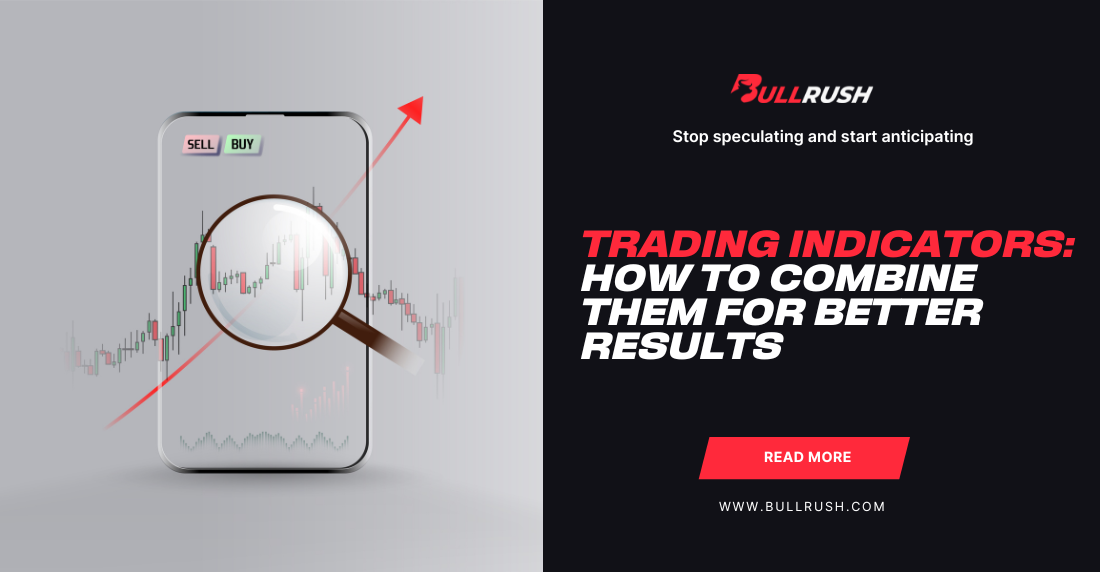
Top Trading Indicators for Traders: Trade Like a Pro
Did you know that over 80% of day traders quit within 2 years?
What separates the successful few from the rest isn’t mere luck: it’s strategy, discipline, and the smart use of data. What about assistance? Well, that’s where top trading indicators come in. With the aid of these nifty tools, traders can identify high-probability setups, comprehend market behavior, and make well-informed decisions regarding stocks, forex, and cryptocurrencies.
Don’t let your emotions influence your reaction to price moves. Join the club of seasoned traders and use indicators to bring structure and consistency to your trading strategies.
Why Consider Trading Indicators?
Simply put, technical indicators are mathematical calculations based on price, volume, or open interest data that help traders predict future market movements. As a matter of fact, they are go-to tools for most in fast-paced situations, such as trading competitions. Why? Making split-second decisions without data can make or break your standing on the leaderboards.
It is traders who consistently use technical indicators in their strategies that see improved accuracy. Nowadays, intuition is a thing of the past.
Indicators fall into 2 main categories, and you need both to succeed:
- Leading Indicators: Predict future price movements (e.g., Relative Strength Index).
- Lagging Indicators: Confirm trends after they happen (e.g., Moving Averages).
Top 5 Trading Indicators: Calculate the Market
1. Relative Strength Index (RSI)
The Relative Strength Index (RSI) is a momentum oscillator that measures the speed and change of price movements on a scale of 0 – 100. It helps identify overbought (above 70) or oversold (below 30) conditions, signaling potential reversals.
👉Tip: To measure market sentiment, think about integrating real-time leaderboards with RSI. It could be a sign to follow suit if top traders are exiting positions when the RSI is overbought. However, since RSI can stay in extreme zones during strong trends, avoid using it in isolation.
2. Moving Average Convergence Divergence (MACD)
One of the most widely used technical indicators in modern trading is the Moving Average Convergence Divergence (MACD). In essence, it is made out of the MACD line (12-period EMA minus 26-period EMA), a signal line (9-day EMA), and a histogram. Furthermore, crossovers between the MACD and signal line indicate bullish or bearish momentum.
👉Tip: Use MACD in longer-term challenges to confirm trends, and pair it with insights to manage position sizing effectively. Watch for divergences (e.g., price rising but MACD falling) to anticipate reversals.
3. Bollinger Bands
Bollinger Bands consist of a simple moving average (SMA) and two standard deviation bands above and below it. They measure volatility and identify overbought or oversold conditions when prices touch or break the bands.
In stock competitions, Bollinger Bands can help identify breakout opportunities. For instance, it can frequently indicate a strong bullish move when the price of a stock breaks above the upper band with high volume.
👉Tip: Think about using Bollinger Bands to set stop-losses just below the lower band for long positions in trading challenges. Also, combining them with volume indicators to confirm breakouts, as low-volume breakouts are less reliable.
4. Volume Weighted Average Price (VWAP)
VWAP determines an asset’s average price over a given period, weighted by volume. As such, day traders like to use it in order to determine if a price is above (overvalued) or below (undervalued) the average one.
VWAP is perfect for day trading competitions, where quick decisions are key. A stock may seem like a buying opportunity for a brief rebound if it is trading below VWAP.
👉Tip: In fast-paced challenges, try using VWAP to avoid chasing overvalued assets and see what happens. In addition, never forget about discipline and avoid emotional trades.
5. Fibonacci Retracement
Fibonacci Retracement uses key ratios (23.6%, 38.2%, 50%, 61.8%) to identify potential support and resistance levels based on prior price movements. Because of its ability to forecast continuations and pullbacks, it is a fan-favorite among the traders community.
Following a rally in February 2025, the S&P 500 index declined to its 38.2% Fibonacci level, giving traders a unique chance to buy before a 5% increase. As a result, many found this information useful for long-term challenges to maximize returns.
👉Tip: To find support during pullbacks, use charting tools to draw Fibonacci levels. Also, always make sure you place stop-losses below the subsequent Fibonacci level to control risk, and use RSI in combo with it to validate entries at critical levels.
Why BullRush and Indicators?
BullRush, our gamified platform, with its trading competitions and challenges, is created with the idea to make learning and applying indicators fun and rewarding. In fact, the intuitive dashboard, quick onboarding, and real-time leaderboards all make it easier to test strategies and track progress. No matter if you are a seasoned trader or a novice, you can work on improving your trading edge.
Tips for Using Indicators on BullRush
- Start simple: Beginners should focus on one or two indicators, like RSI and MACD, to avoid analysis paralysis.
- Combine indicators: Pair a momentum indicator (e.g., RSI) with a trend indicator (e.g., MACD) for stronger signals. This is a smart approach that is particularly effective in volatile crypto competitions.
- Practice in Free Trading Competitions: BullRush offers free entry competitions, ideal for testing indicator-based strategies without financial risk.
- Monitor leaderboards: Live leaderboards show how top traders use indicators. If you notice a surge in sell orders when RSI reaches 75, consider altering your strategy to match.
Ready, Trade, BullRush
All in all, top trading indicators like MACD, RSI, Bollinger Bands, VWAP, and Fibonacci Retracement can improve your trading by helping you spot trends and time entries. Remember, no indicator works alone — a combo with good risk management is key to the best results.
Test out and practice these tools on our very own BullRush platform. You can join trading competitions and sharpen your skills in a fun and realistic environment. Ready to trade smarter?
Join the BullRush thrill of the rush today!



